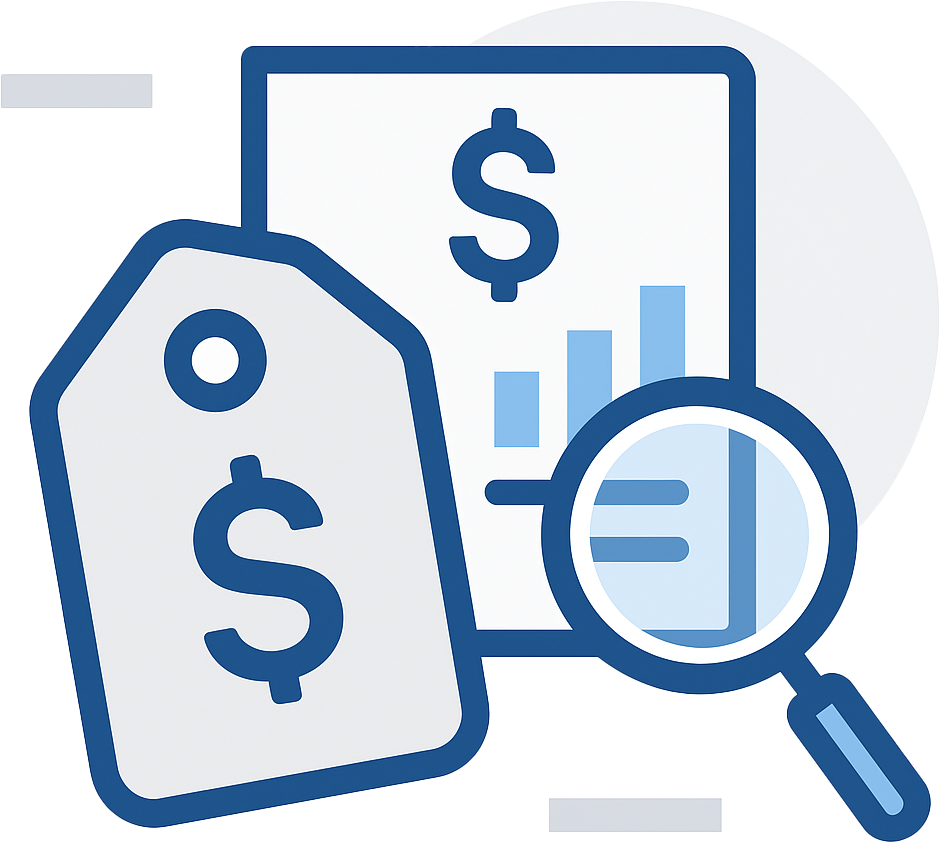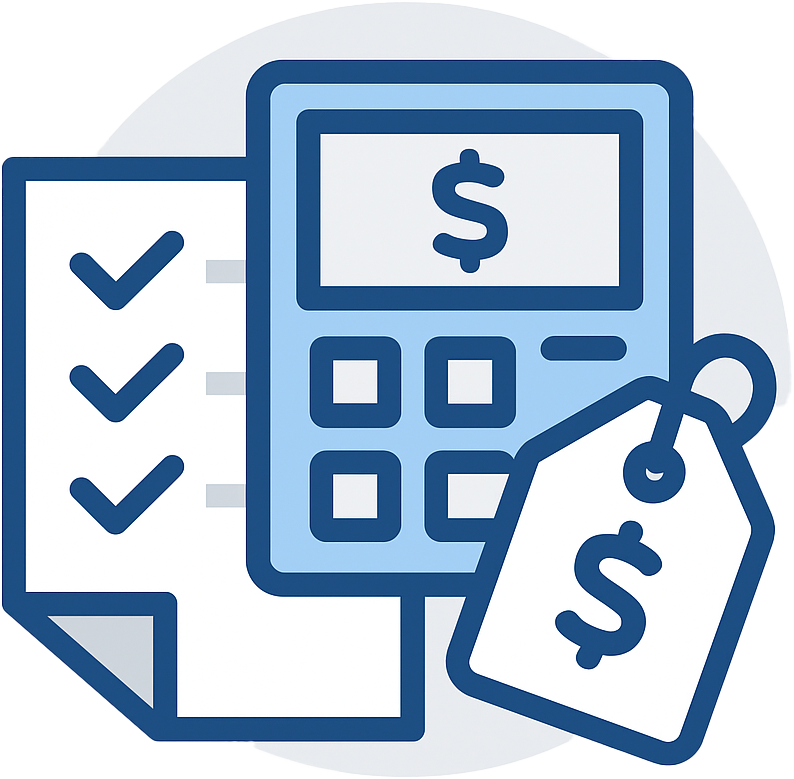We compare Phase I Environmental Site Assessments and Property Transaction Screen Analysis.
Every buy something you wound up regretting? Maybe you thought you were buying a great vehicle, but bought a lemon. Maybe you bought a hot stock, only to watch it plummet. Maybe you bought a book and it turned out to be a horrible read.
Regardless of whether you invested a small amount or your life's saving, there's and underlying thought you'll most likely have with any purchase.
I hope I'm spending my money well.
But what about buying property? A lot of folks want to know how they can spend their money well, or simply protect their investments, and finding out if that's possible is harder than most folks think.
Fortunately, there are two commonly used pieces of environmental due diligence available to people to protect their investment and avoid "buying a lemon".

Phase I Environmental Site Assessments vs Property Transaction Screen Analysis
The two pieces of environmental due diligence I'm referring to are Phase I Environmental Site Assessments and Property Transaction Screen Analysis.
A Phase I ESA conducted in accordance with the ASTM E1527-21 standards by an Environmental Professional is the best way to identify recognized environmental conditions (RECs) on a property. You do this to limit your liability and protect yourself should the property be found to be contaminated from prior releases of petroleum products or hazardous chemicals.
I know, gibberish, right? Let me break it down. An Phase I is conducted according to very specific standards by someone who meets specific qualifications, in order to find contamination (by petroleum products or hazardous substances) at, on, in the piece of property in question in order to limit your future liability, and protect yourself incase contamination is found in the future.
But, depending on the type of property to be evaluated, a Phase I ESA can be expensive and time-consuming.
And, it needs to be conducted by someone who meets the qualifications of an Environmental Professional (or else it doesn’t meet the standards, and doesn’t provide you the protection you think it does).
I hope that clears it up a bit. If not, here's some additional articles of use:

But what about a Property Transaction Screen? Can it be done cheaper or quicker than a Phase I? In most cases, probably!
So a Transaction Screen sounds like a winner, right? Yes and no. There are some real differences between the two, which really start at the most simple level.
Think of it this way: a Phase I ESA meets very specific requirements of the “All Appropriate Inquiry” (or AAI) rule, which stipulates that this practice, as outlined by the ASTM E1527-13 standards, be used to obtain the liability protection that you’re probably looking for.
In layman’s terms, this means that if you do a Phase I ESA in conformance with the ASTM standards, it will provide you a level of protection in most cases.
A TS does not. Pure and simple. Think of it as a “Phase I Lite”. It will not provide you with any liability protection that most folks looking into getting some sort of due diligence are probably looking for.
Just bear in mind, there are standards for a Property Transaction Screen, called ASTM E1528-14. Whoever does your Transaction Screen Analysis is going to have to follow these standards, just like someone has to follow the Phase I ESA standards.
The Pros of a Phase I Environmental Site Assessment vs Property Transaction Screen Analysis
A Phase I ESA follows a standard method.
It absolutely must be conducted by an Environmental Professional who meets the standards, or else your Phase I won't provide you with any liability protection. In short, it will be somewhat useless. We go over this in our article on who can conduct a Phase I ESA?
A Phase I provides unmatched liability protection.
Simply put, a Phase I ESA provides full liability protection and satisfies the requires of AAI, or All Appropriate Inquiries, which more or less is saying you did you homework before you bought the property, and to the best of your knowledge it's free and clear of contamination. We cover this in our article what protection does a Phase I Environmental Site Assessment provide?
A Phase I covers a lot.
When you're looking into contamination, a Phase I site assessment is going to review not only your site, but adjoining properties, and properties within a certain distance from the site. A knowledgeable, experienced professional is going to look into a lot of different resources, conduct a site inspection, interviews, and review records in town, county, or state offices if necessary. Check out what does a Phase I Environmental Site Assessment cover? to learn more.
The goal of a Phase I ESA is finding RECs at your property.
These are tightly defined and are universally recognized. There's no wiggle room or grey area for defining a REC. If your environmental professional finds one, it should be pretty cut and dry what they're talking about and referring to. We go over RECs in our article on what are RECs in a Phase I Environmental Site Assessment?
A Phase I is really the gold standard when it comes to environmental due diligence.
They're recognized all over the U.S., and other countries even have similar standards. Meaning, your Phase I is going to be instantly recognizable, maximum credibility. Accepted by users, lending institutions, and most others.

The Cons of a Phase I Environmental Site Assessment vs Property Transaction Screen Analysis
A Phase I ESA is time consuming.
Make no bones about it, a good Phase I ESA should take a few weeks to conduct and write up. They can be done quicker, but that's really not recommended.
Phase I's aren't cheap.
We usually tell folks a Phase I conducted by a competent, qualified, environmental professional should run you anywhere from $1,500 to $6,000. Yes, I know that's a wide range in prices, but there's a lot of factors and considerations to take in. Do you have a site in the middle of Brooklyn that you need a Phase I completed for in less than a week, or is your site located in rural Kansas and time is not an issue? We cover this topic in depth in our article on how much does a Phase I ESA cost?
A Phase I is a big, big report.
You can end up with a thick, voluminous final report, depending on who prepares it. A good Phase I needs to meet certain standards, include certain things, and back up findings with documentation. Nowadays, Phase I ESA reports in the hundreds to thousands of pages are not uncommon. But, the most important part to you is generally going to be the first 30 to 60 pages of the report. This is where the environmental professional analyzes everything they've found and compiles it into a report.

The Pros of a Property Transaction Screen Analysis vs a Phase I ESA
A Property Transaction Screen is a screen only, so it's pretty quick to perform.
They usually can be done within a few days or so. It's a fairly easy thing to complete. The process is based on a standard questionnaire of 20 questions and 16 observable site conditions, along with limited records searches and interview requirements. It’s not nearly as difficult as the complex Phase I ESA process.
The Transaction Screen can be done by anyone.
Literally, anyone. You can do it, your real estate guy can do it, your banker, an environmental consultant, or even a butcher, a baker, or a candlestick maker! You don’t need to be an Environmental Professional to do one. As long as you can read and understand the Property Transaction Screen Analysis guide and exercise good faith efforts, nearly any intelligent person can do one, without restrictions.
Property Transaction Screens are cheaper.
A lot cheaper. Since you don’t need an environmental professional (and could literally do one yourself), the cost is usually far, far less than a Phase I ESA. They could run you somewhere between $500 and $1,000, depending on variables.
The Cons of a Property Transaction Screen Analysis vs a Phase I ESA
Property Transaction Screens really don't carry any weight.
A Transaction Screen doesn’t meet AAI requirements, and doesn’t provide liability protection. Meaning if something is missed (say like a buried leaking oil tank that wasn't readily visible) and later contamination is found at your property, guess who’s liable for it? You! You didn’t do a Phase I ESA, since you tried to save money, and that mistake (in the leaking tank case) could cost you upwards of $10,000 or more!
They can literally be done by anyone.
If I had the right tool I theoretically could work on your car, but I've never fiddled with anything under the hood of a car in my life. Would you trust me? I know I wouldn't! The fact that a Property Transaction Screen can be done by anyone is a red flag in my book. You could have someone who read through the standards in 15 minutes conducting the work. When it comes to protecting an investment, you're going to want qualifications and experience.
A Property Transaction Screen Analysis is known to not carry weight.
Any lenders, attorneys, consultants, government agencies, and anyone else asking for environmental due diligence know it doesn't carry and weight. You may have some folks question, or even reject, a Transaction Screen as due diligence for this reason. So if you spent $750 to avoid a $2,500 Phase I, you might still need that $2,500 Phase I! Remember I called it "Phase I Lite"?
Further work may be necessary.
Depending on the results, you may have the need for further work. That could include more comprehensive environmental due diligence in the form of a – you guessed it – Phase I ESA.

Value of a Property Transaction Screen Analysis vs Phase I Environmental Site Assessment
Simply put, a Property Transaction Screen Analysis doesn't carry the same amount of value as a Phase I ESA. It doesn't protect your investment the same was a Phase I does.
Think about it. Look at the reasons above. A Transaction Screen Analysis doesn’t sound too good now, does it? It's cheaper, but not by much, and doesn't have as much weight as a Phase I. So why bother? If you're spending a quarter of a million dollars or more on a piece of property, why cheap out and save a few hundred bucks by getting a Phase I ESA vs a Transaction Screen?
In most cases, you really ought to have a Phase I ESA done, since you probably have a lot riding on your investment.
Are there circumstances when a Property Transaction Screen might fit the bill? Yes. Maybe you just want a quick screen to see if you’re interested in acquiring a property, and you’ll do a Phase I ESA later during the acquisition process. Maybe you’re under some sort of time crunch. I get it. There might be a lot of reasons why a TS is a reasonable approach, but in my book, they aren't worth the reduction in price. You investment is on the line. Don't risk it.
To learn more about Phase I Environmental Site Assessments click here to contact us or give us a call at 609-693-8301.

















